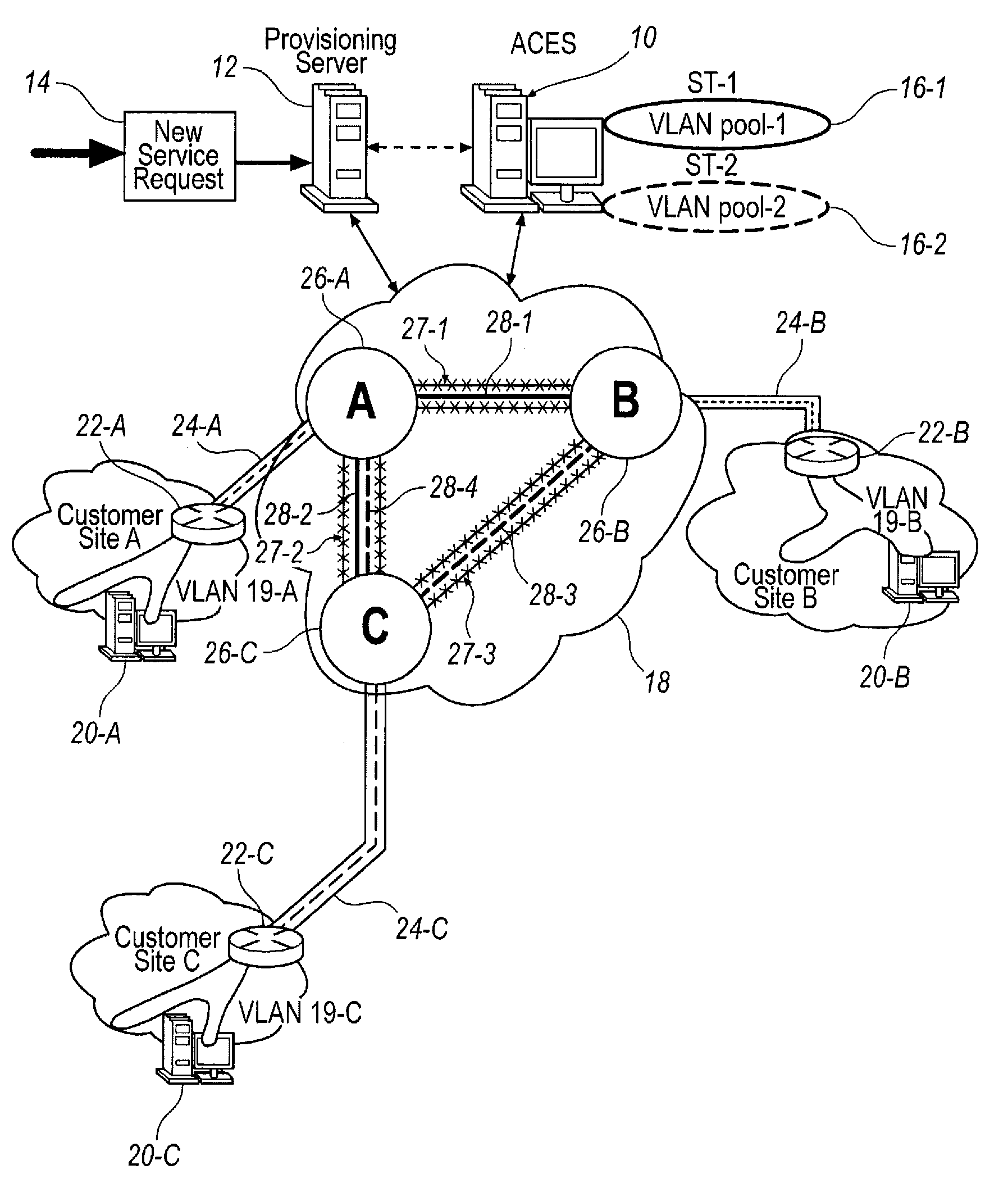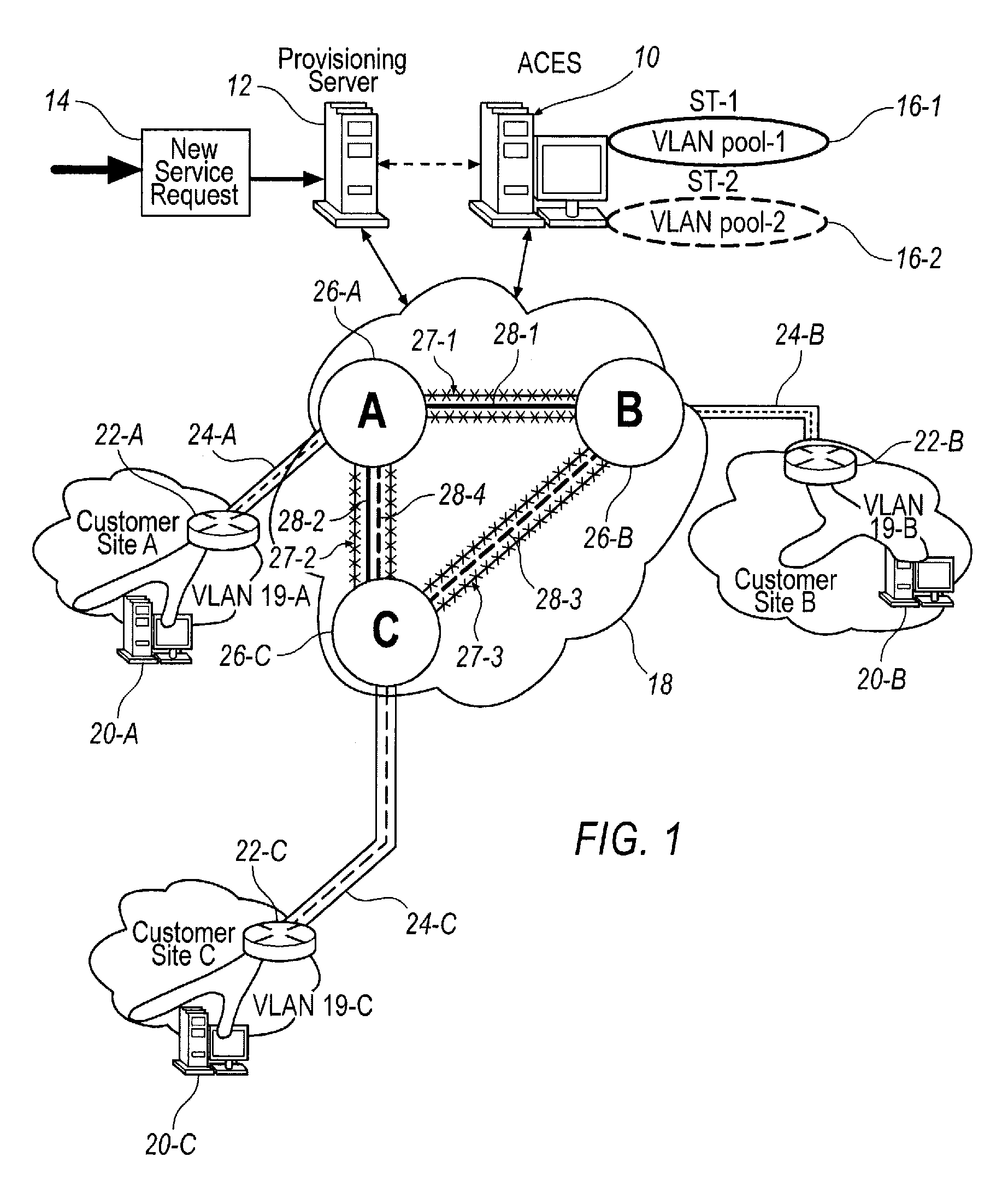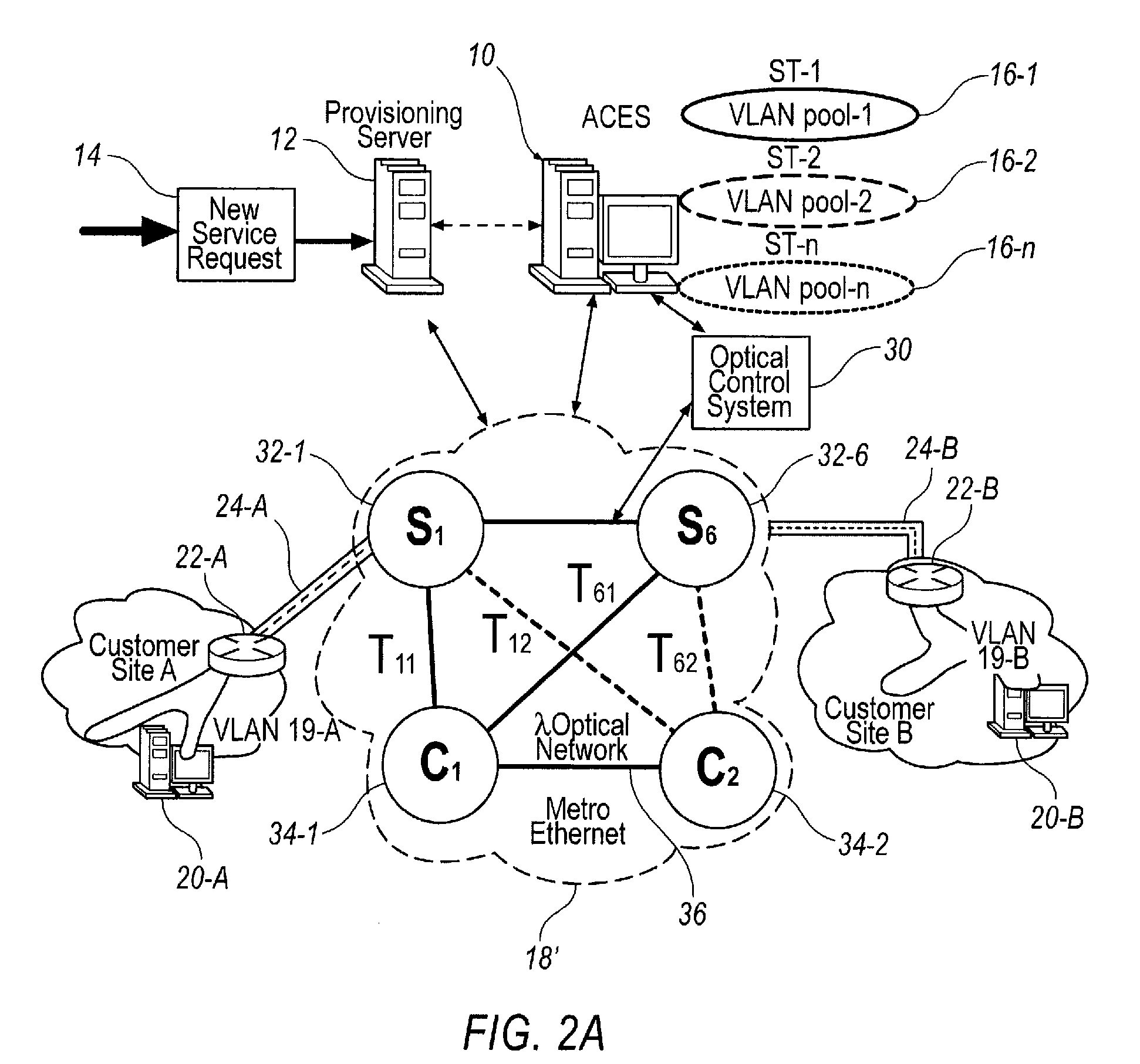Admission control for services
a technology for admission control and services, applied in the field of admission control for services, can solve the problems of ethernet technology not being mature enough for use in a service provider environment, datagrams can be lost, delayed or delivered out of order, and ethernet has a major scalability bottleneck
- Summary
- Abstract
- Description
- Claims
- Application Information
AI Technical Summary
Benefits of technology
Problems solved by technology
Method used
Image
Examples
Embodiment Construction
[0014]Preferred systems and methods are described herein, these preferred systems and methods are configured to control connection admission into a network and determine the most efficient path through the network based on a Class of Service (CoS) requirement received in a service request. The described embodiments provide a centralized admission control and path selection function for provisioning connections such as Ethernet Virtual Connections (EVCs) in a network such as a multiple spanning tree network. Through the admission control and path selection facilities, CoS requirements can be achieved even in networks such as Ethernet networks that do not support CoS marking for packets.
[0015]Referencing FIG. 1, in one embodiment an admission control system 10 such as an Admissions Control for Ethernet Services (ACES) system is provided as a host computer or server furnished with a mechanism that is operable to provision connections in a network 18 based on CoS requirements and by usi...
PUM
 Login to View More
Login to View More Abstract
Description
Claims
Application Information
 Login to View More
Login to View More - R&D
- Intellectual Property
- Life Sciences
- Materials
- Tech Scout
- Unparalleled Data Quality
- Higher Quality Content
- 60% Fewer Hallucinations
Browse by: Latest US Patents, China's latest patents, Technical Efficacy Thesaurus, Application Domain, Technology Topic, Popular Technical Reports.
© 2025 PatSnap. All rights reserved.Legal|Privacy policy|Modern Slavery Act Transparency Statement|Sitemap|About US| Contact US: help@patsnap.com



